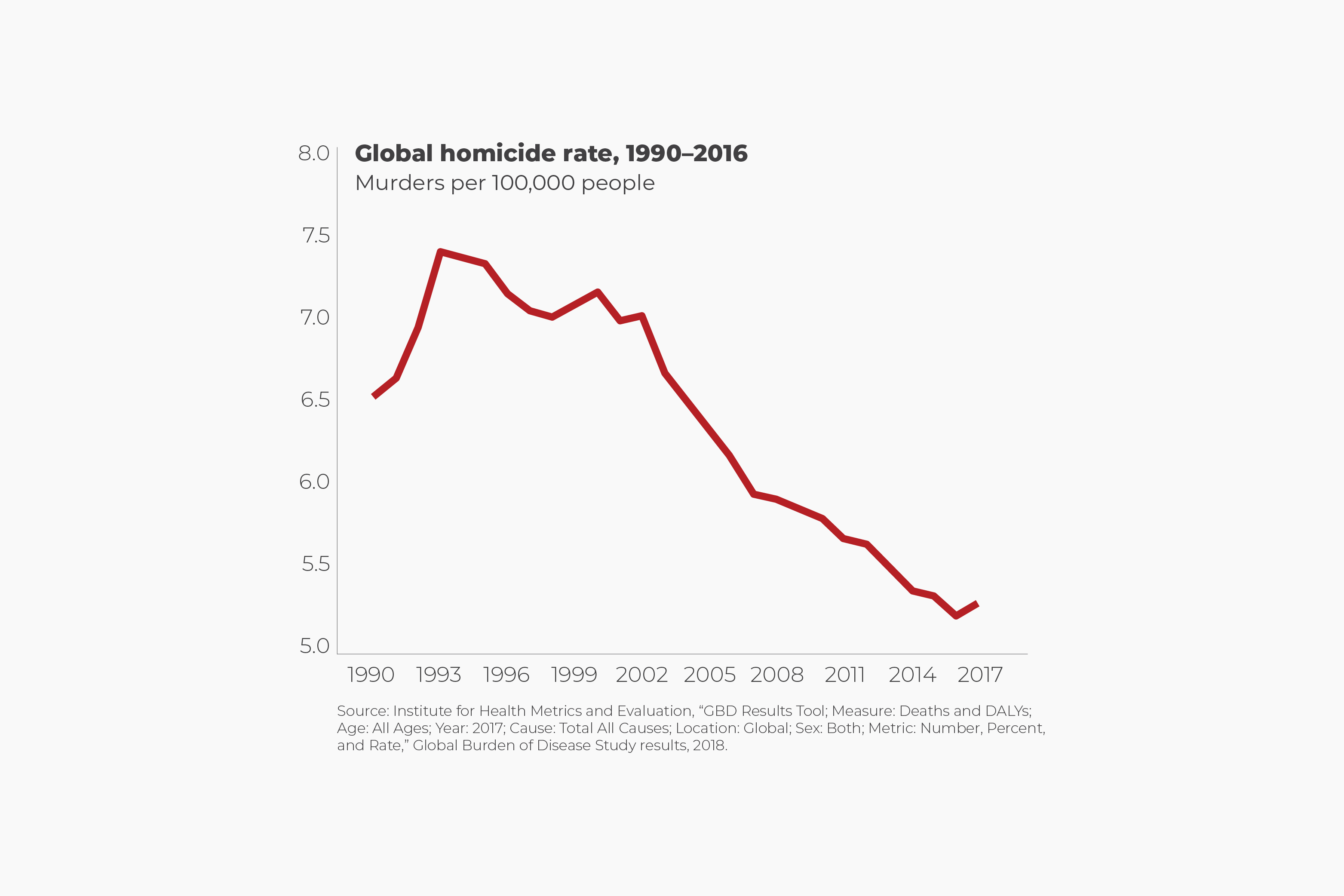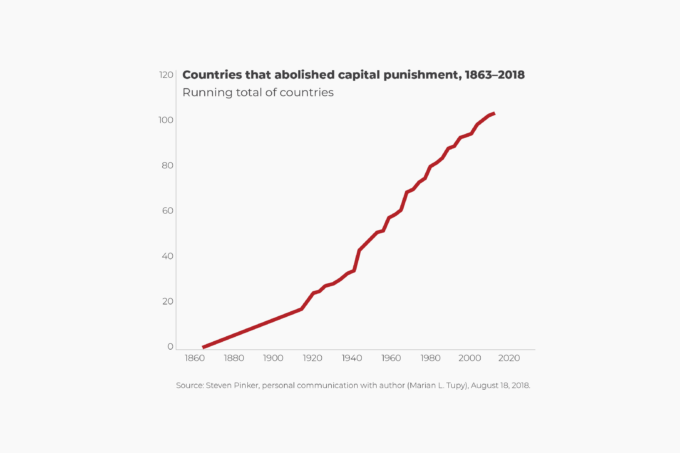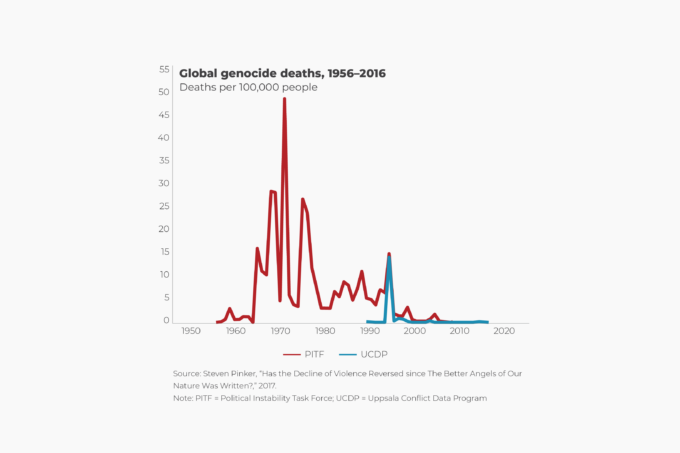Lethal violence was pervasive throughout the world until relatively recently. The best evidence for national murder rates comes from Europe, where extensive records were kept going back centuries.
Cambridge University criminologist Manuel Eisner cites data in his 2003 article “Long- Term Historical Trends in Violent Crime,” suggesting that the annual homicide rate in 15th-century England hovered at about 24 per 100,000; Dutch homicide rates during the same time are estimated at between 30 and 60 per 100,000; and Swedish homicide rates ranged from 10 to 60 cases per 100,000 between the mid-15th and the mid-17th centuries. Interpersonal violence was ubiquitous in premodern Italy.
Fourteenth-century Florence experienced the highest known annual homicide rate of 150 per 100,000, and estimated homicide rates in 16th-century Rome ranged from 30 to 80 per 100,000. Today, the intentional homicide rate in all of those countries stands at about 1 per 100,000.
Between 90 percent and 95 percent of all perpetrators of homicide are male. The same is true of 80 percent of murder victims. Eisner notes, “Almost half of all homicides worldwide occurred in just 23 countries that account for 10 per cent of the global population.” Unfortunately, medieval levels of violence still afflict countries like El Salvador, Honduras, and South Africa, whose homicide rates are, respectively, 108, 64, and 34 per 100,000. “Without exception societies with high homicide rates suffer from dysfunctional law enforcement and criminal justice systems,” notes Eisner.
In contrast, about half of the world’s population lives in low-homicide societies that account for only 10 percent of all homicides worldwide. As the rule of law, fairer judicial systems, and better policing have spread to more countries around the world, the global homicide rate according to the Institute for Health Metrics and Evaluation has dropped from 6.4 per 100,000 in 1990 to 5.3 per 100,000 in 2017. That’s a reduction of 17 percent over a remarkably short period of 26 years, or 0.7 percent per year.1
- Institute for Health Metrics and Evaluation, “GBD Results Tool; Measure: Deaths and DALYs; Age: All Ages; Year: 2017; Cause: Total All Causes; Location: Global; Sex: Both; Metric: Number, Percent, and Rate,” Global Burden of Disease Study results, 2018, https://ghdx.healthdata.org/gbdresults-tool.








